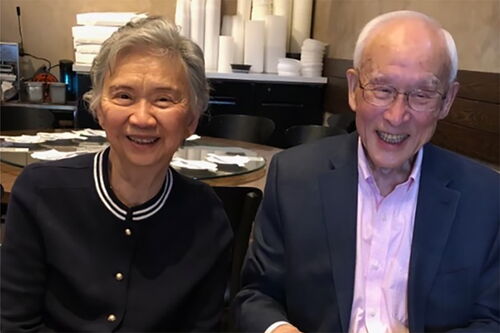Medicines for malaria and more
In 1984, researchers first isolated the HIV virus, the culprit behind the AIDS epidemic that was spreading panic across the United States. It was also the year that a group of scientists formed a small start-up company known as Agouron Pharmaceuticals—a company that would go on to develop one of the most effective drugs to battle the HIV virus.
David Matthews (PhD, '71, chemistry) was the scientific founder of Agouron. He is also a 2007 winner of the LAS Alumni Achievement Award.
As Matthews recalls, "In the mid-'80s, the National Institutes of Health (NIH) was in a panic mode trying to figure out ways to develop drugs that could have an effect on HIV."
Agouron became part of an elite group of five research centers that received a grant from NIH to face this daunting challenge. This seed funding eventually led to the drug Viracept, which Agouron discovered and developed, rapidly becoming the leading HIV protease-targeted drug.
When Viracept was introduced in 1997, "it was an astounding success," Matthews says. Viracept, along with a few other HIV drugs, became part of the first "cocktails" given to AIDS patients that "really knocked their viral loads down to the point where they could resume fairly normal lives," he says. "These people had been given a death sentence. But all of a sudden, they could resume their lives."
What's more, Viracept generated $700 million in sales the first year it was introduced, setting a record for any biotech product.
Viracept works by binding to and inactivating a protease, which the HIV virus needs to replicate. But this drug might never have come about had it not been for the groundwork that Matthews laid as a student at University of Illinois and during 15 years at the University of California at San Diego (UCSD).
Matthews credits U of I with giving him in-depth training in the x-ray methods that became crucial to his future work. After graduating from U of I, he took a position in the Chemistry Department at UCSD, where he worked with x-ray crystallography, a tool of choice for determining molecular structures at the atomic level.
Matthews used this method to figure out how various known drugs bound potently and, in some cases, selectively to different species of an enzyme called dihydrofolate reductase (DHFR), required for living cells to replicate. A drug that binds well to bacterial DHFR without binding to the corresponding human enzyme makes it possible to selectively kill bacteria.
When confronted with the AIDS crisis, Matthews realized they could use the same technique to study the structure of molecules in creating new drugs. Prior to this, the approach to developing drugs that knocked out bacteria and viruses was much more random.
"You exposed bacteria to many different chemicals, looked for the one that killed them, and hoped they also didn't kill the host," he explains. "It was pretty hit and miss."
Since then, many companies, including large pharmaceutical companies such as Pfizer and Merck, use similar approaches in drug discovery.
In 1999, the company that Matthews helped found, Agouron, merged with Warner-Lambert, which was subsequently purchased by Pfizer in 2000; it is now one of Pfizer's four research and discovery sites worldwide. Matthews retired from the company in 2005, but the research continues. He currently works with two organizations in discovering and developing medicines for diseases in developing countries.
One effort is through the public-private partnership Medicines for Malaria Venture (MMV), the broadest and most extensive organization funding malaria research/drug development in the world. Matthews serves on their Expert Scientific Advisory Committee and works as a consultant on several individual MMV drug discovery projects.
One of these projects will be delivering an exciting new malaria-fighting drug candidate for clinical trials later this year. Malaria accounts for at least a million deaths worldwide each year, say the Centers for Disease Control and Prevention.
Matthews also works on the steering committee for the Special Program for Research and Training in Tropical Diseases, which targets 10 tropical diseases. Staying a step ahead of these diseases is tough, Matthews says, for the simple reason that malaria and other infectious diseases eventually develop resistance. As a result, scientists must find new drugs roughly every six or seven years.
The same is true for their AIDS drug Viracept. Although Viracept is still used by tens of thousands of patients in parts of the world where resistance is not yet a factor, Matthews says that a second-generation of protease inhibitors is now doing the job in the United States.








